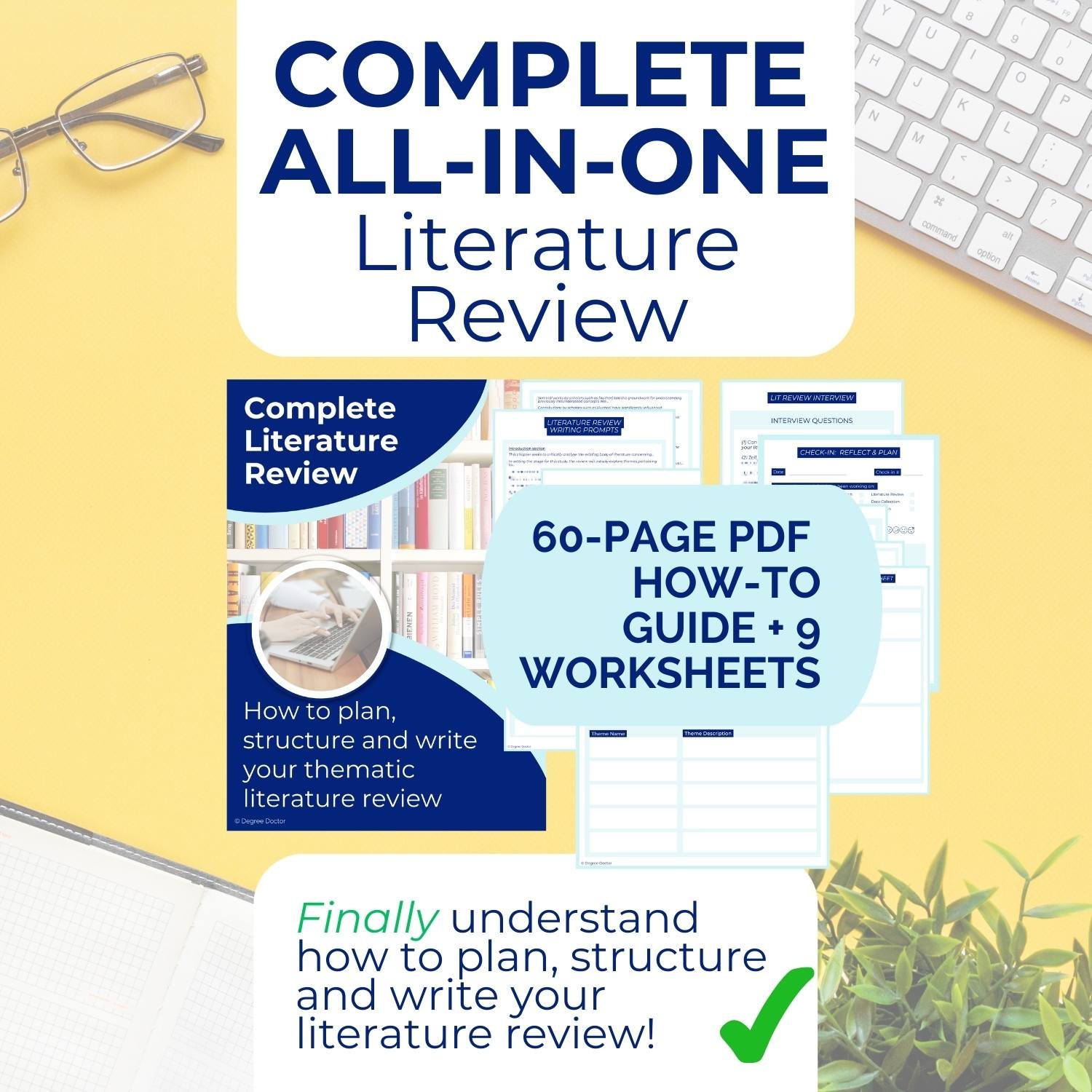Thematic Literature Reviews - How to develop an initial set of themes
Knowing how to develop an initial set of themes is crucial in starting strong with your thematic literature review. In this short blogpost, I’ll walk you through how to do that, using an example.
What is a thematic literature review?
First up, let’s quickly recap what a thematic literature review is. Thematic literature reviews organise content around central ideas and concepts. They group similar ideas together, giving you a big-picture view, unlike chronological reviews which follow a timeline, or methodological reviews that are organised by research methods. It's kind of like sorting your wardrobe by colours instead of by purchase date.
How to identify themes
But, how do you make a start? Where do the themes actually come from? I always advise students to begin with their research title, because there's theme gold in that title!
Imagine you're a psychology PhD student whose title is, "Exploring the impact of mindfulness practices on workplace stress reduction within the real estate industry."
Break that title down into keywords and key phrases like "Mindfulness practices," "workplace stress reduction," and "real estate industry". These keywords could form the backbone of three initial themes, shaping the narrative of your literature review.
From themes to questions
Now, underneath each theme, develop a set of questions you want to explore within the literature.
For example, under the theme "mindfulness interventions," you might develop questions such as:
How do mindfulness practices contribute to stress reduction in the workplace?
What are the specific techniques used in mindfulness interventions for workplace well-being?
Are there any empirical studies demonstrating the efficacy of mindfulness-based stress reduction programs in real estate settings?
How do employees perceive and engage with mindfulness practices within the context of the real estate industry?
Similarly, for the theme "workplace well-being initiatives," potential questions could include:
What are the key components of workplace well-being initiatives implemented in the real estate industry?
How do employers and employees perceive the effectiveness of workplace well-being programs?
Are there any notable challenges or barriers to the implementation of workplace well-being initiatives within real estate organisations?
What role do organisational culture and leadership play in fostering a supportive work environment for employee well-being in the real estate sector?
These questions will guide your literature search and help you gather relevant studies and evidence to address each aspect of your thematic review.
I hope that's helpful to get you started!
Next steps
If you need additional guidance, be sure to check out my step-by-step guide for planning, structuring and writing a thematic literature review. Details below!
